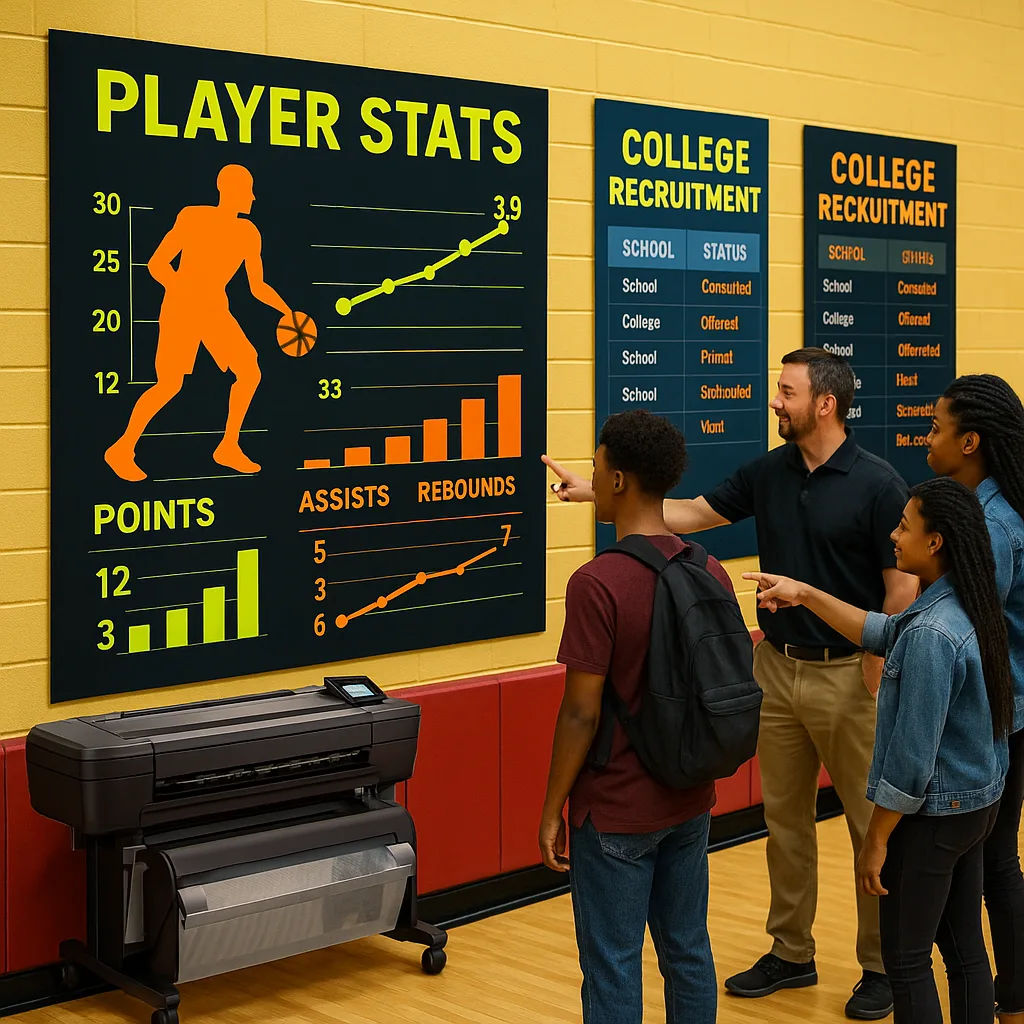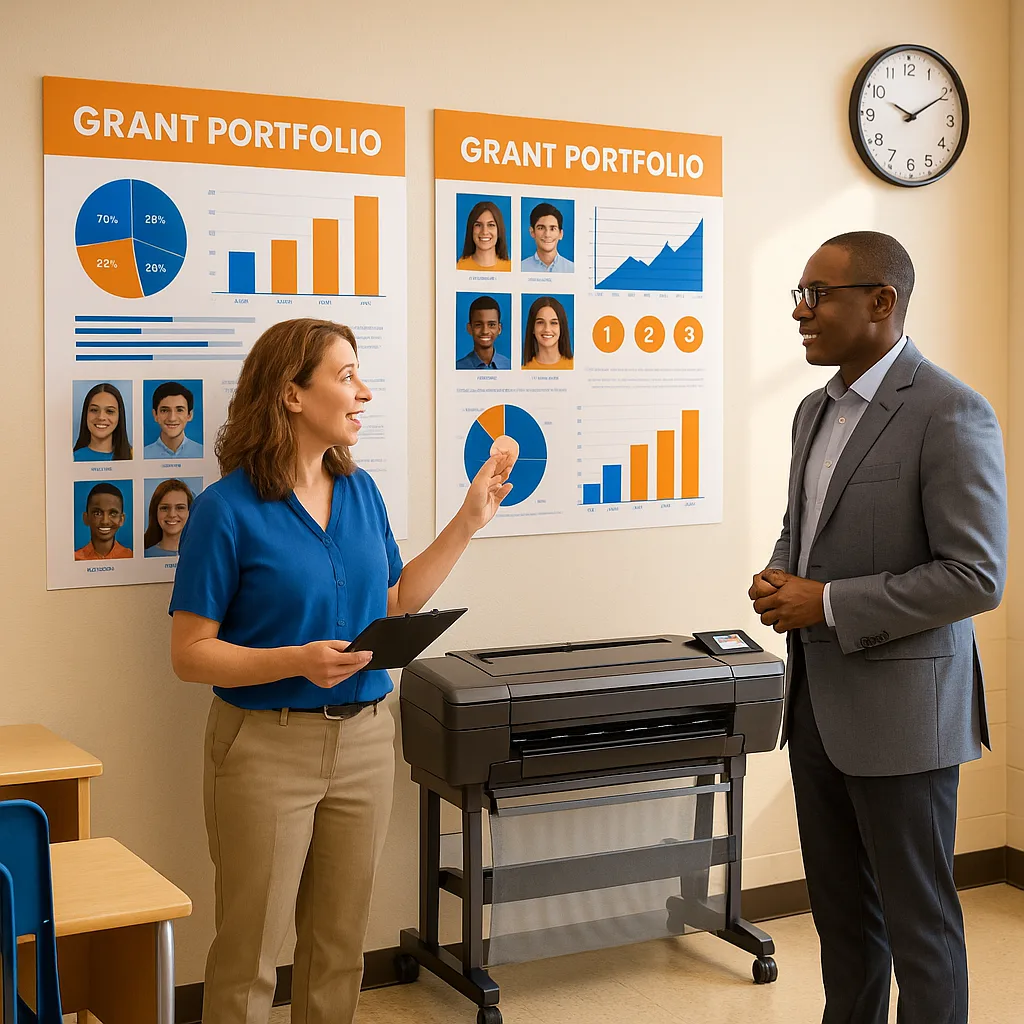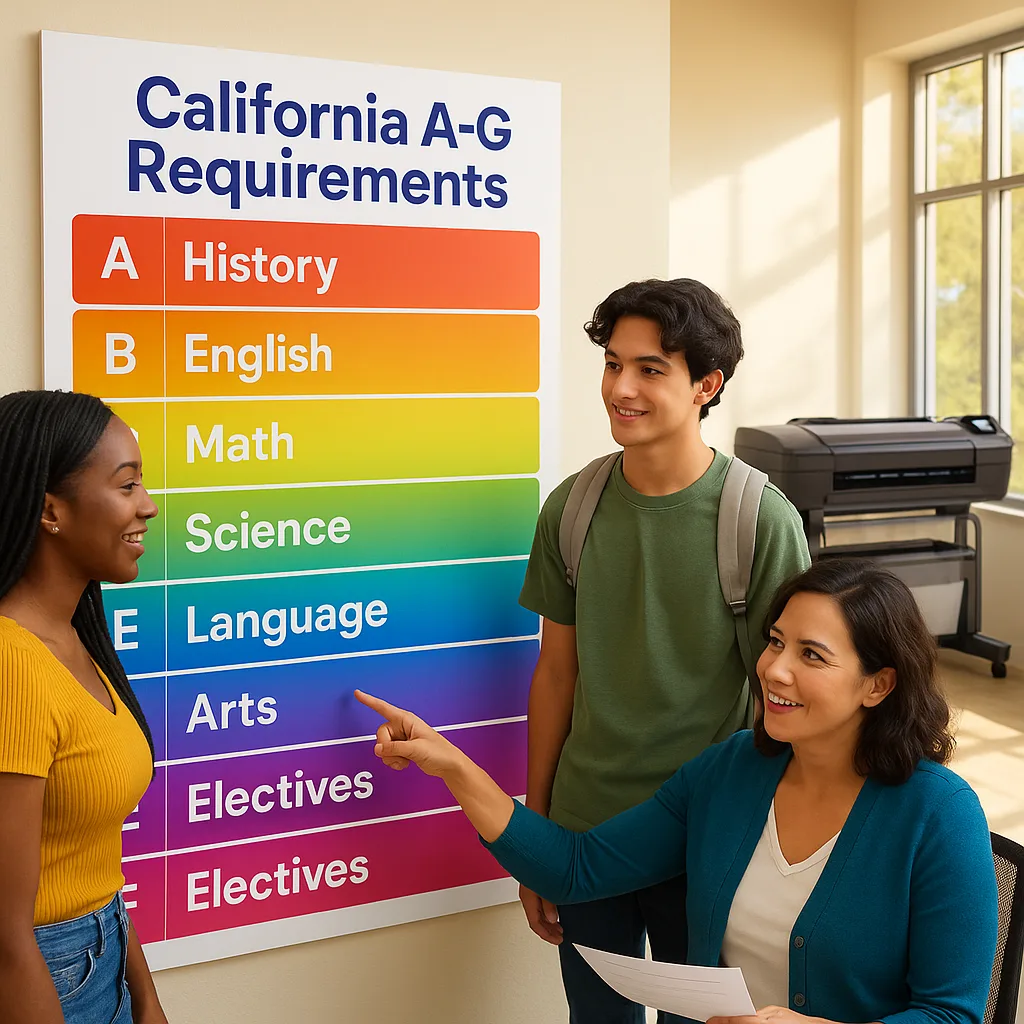
California’s A-G requirements represent the minimum coursework students need to qualify for UC and CSU admission. Yet translating these 15 subject-specific mandates into actionable guidance for 6th through 12th graders demands precision, clarity, and consistent communication. That’s where poster machines for A-G requirements transform abstract policy into visual roadmaps that keep students, families, and counselors aligned throughout the seven-year journey to college eligibility.
Understanding California’s A-G Framework Through Visual Communication
The University of California and California State University systems require specific course patterns across seven subject areas. Students must complete these with a grade of C or better while maintaining competitive GPAs. Furthermore, the requirements include:
• History/Social Science (A): 2 years required
• English (B): 4 years required
• Mathematics (C): 3 years required, 4 recommended
• Laboratory Science (D): 2 years required, 3 recommended
• Language Other Than English (E): 2 years required, 3 recommended
• Visual and Performing Arts (F): 1 year required
• College Preparatory Elective (G): 1 year required
Districts implementing visual tracking systems report 23% higher four-year college eligibility rates compared to those relying solely on course catalogs and counselor meetings, according to the Public Policy Institute of California. Meanwhile, schools using comprehensive poster displays for A-G guidance see improved parent engagement at college planning nights and clearer student understanding of graduation pathways.
Poster Machines for A-G Requirements: Essential Design Elements
Creating effective A-G tracking visuals requires understanding both state policy nuances and developmental readiness at each grade level. Professional poster maker machines enable counselors to produce grade-appropriate materials that evolve with student needs while maintaining consistent messaging across secondary campuses.
Middle School Foundation Posters (Grades 6-8)
Middle school represents the critical foundation period where students develop academic habits and explore interests that shape high school course selection. Therefore, visual materials for this age group should emphasize exploration over prescription.
Grade 6 Focus: Introduction to A-G categories through career exploration posters linking subjects to future possibilities. Display mathematics pathways showing how pre-algebra connects to high school sequences.
Grade 7 Focus: World language sampling posters highlighting the two-year requirement while encouraging early starts. Science exploration displays connecting lab experiences to future coursework.
Grade 8 Focus: High school planning templates showing four-year sequences. Algebra readiness indicators and summer bridge program promotions for mathematics acceleration.
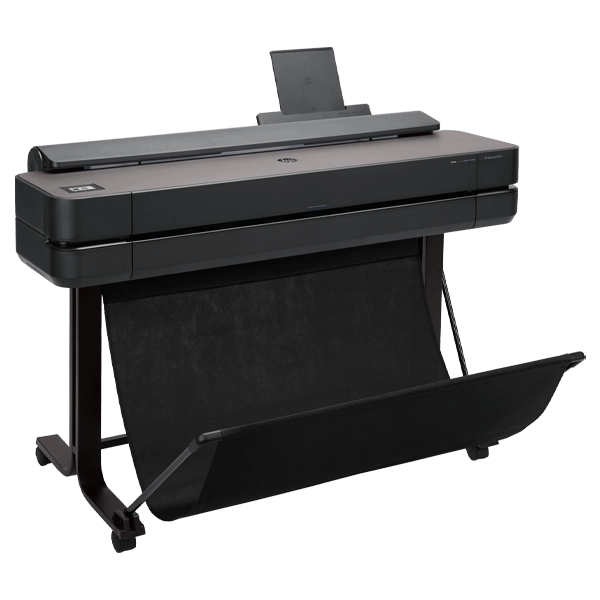
Visual tracking systems help students understand college pathways early
The Education Studio 36″ Package C+ provides the width needed for comprehensive A-G tracking charts. Its water-resistant output ensures durability in high-traffic counseling centers where students frequently reference requirements.
Additionally, incorporating QR codes linking to UC/CSU planning tools extends poster functionality beyond static information. Students can scan to access GPA calculators, course approval databases, and virtual counseling appointments.
High School Implementation Strategies
Transform counseling offices into college readiness hubs with strategic poster placement that guides students through each academic year.
Grade-Specific Visual Tracking Systems
Each high school grade level requires distinct messaging to maintain momentum toward A-G completion. Subsequently, poster machines enable rapid updates as requirements evolve or individual student needs change.
Freshman Focus
Foundation year posters emphasizing GPA importance, study skills, and exploration opportunities
Sophomore Strategies
Course selection guides showing prerequisite chains and summer enrichment options
Junior Journey
Testing timelines, application prep, and course validation procedures
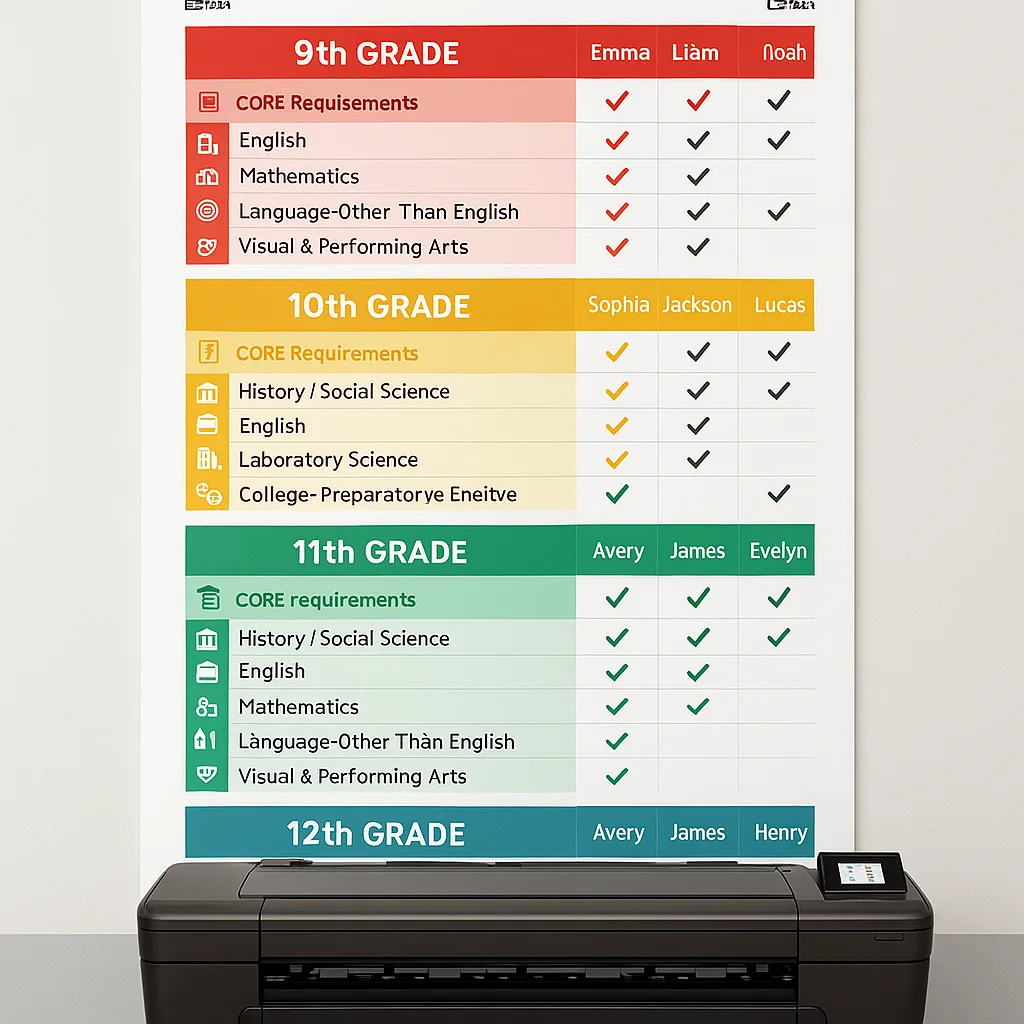
Leveraging Poster Machines for Family Engagement
Parent understanding of A-G requirements directly correlates with student success. Research from the Education Policy Institute of California shows that students whose families actively track A-G progress are 40% more likely to complete requirements on time.
Professional poster machines facilitate multilingual material production, ensuring all families access critical information. Moreover, visual displays in parent centers, during back-to-school nights, and at community events extend college readiness messaging beyond traditional counseling appointments.
Essential Parent Communication Posters
Financial Planning Displays: Timeline posters showing FAFSA deadlines, Cal Grant requirements, and scholarship opportunities aligned with A-G completion milestones.
Summer Learning Options: Visual guides to credit recovery programs, community college dual enrollment, and UC-approved online courses that maintain A-G progress during breaks.
Progress Tracking Templates: Family-friendly checklists allowing home monitoring of course completion, GPA trends, and standardized testing schedules.
Career Pathway Connections: Industry-specific posters linking A-G requirements to regional workforce opportunities, particularly for Career Technical Education (CTE) pathways that fulfill college preparatory electives.
Implementation Timeline and Budget Considerations
Successful A-G visual communication systems require phased implementation aligned with funding cycles and stakeholder readiness. Districts report optimal results when launching comprehensive poster campaigns during spring semester, allowing summer refinement before fall enrollment.
Phase 1: Foundation (Months 1-2)
• Conduct A-G requirement audit with counseling staff
• Design grade-level appropriate poster templates
• Create multilingual parent resources
• Establish poster placement protocols
• Train staff on poster maker machine operation
Phase 2: Expansion (Months 3-4)
• Launch student progress tracking displays
• Integrate QR codes for digital resources
• Develop subject-specific requirement posters
• Create career pathway alignment visuals
• Host parent education nights with visual aids
Funding Alignment with California Priorities
California’s Local Control Funding Formula (LCFF) explicitly supports college and career readiness initiatives. Subsequently, poster machines qualify under multiple funding categories:
Supplemental and Concentration Grants: Visual communication tools serving English learners, foster youth, and low-income students directly support LCAP goals for improved college eligibility rates.
College Readiness Block Grant: Funds specifically allocated for A-G completion support, including materials that increase awareness and access to required coursework.
Title I, Part A: Schools with 40% or more low-income students can allocate funds for parent engagement materials, including multilingual A-G tracking posters.
Perkins V: Career Technical Education programs integrating A-G requirements benefit from visual displays showing pathway alignment with university admission standards.
Measuring Impact: Data-Driven Visual Communication
Effective A-G tracking systems generate measurable outcomes aligned with California’s Dashboard indicators. Schools implementing comprehensive visual communication strategies report improvements across multiple metrics within the first academic year.
Districts using poster machines for systematic A-G communication document 35% increases in on-track ninth graders and 28% improvements in A-G completion rates by senior year, according to aggregated CALPADS data. Additionally, parent survey responses indicate 67% better understanding of college requirements when visual aids supplement traditional counseling services.
The cost effectiveness of in-house poster production enables frequent updates as student cohorts progress. Unlike static purchased materials, poster machines allow real-time adjustments based on enrollment patterns, policy changes, or emerging student needs.
Transform A-G Tracking at Your School
Ready to revolutionize how your students navigate the path to UC/CSU eligibility? Our education specialists understand California’s unique requirements and can guide you to the perfect visual communication solution.





